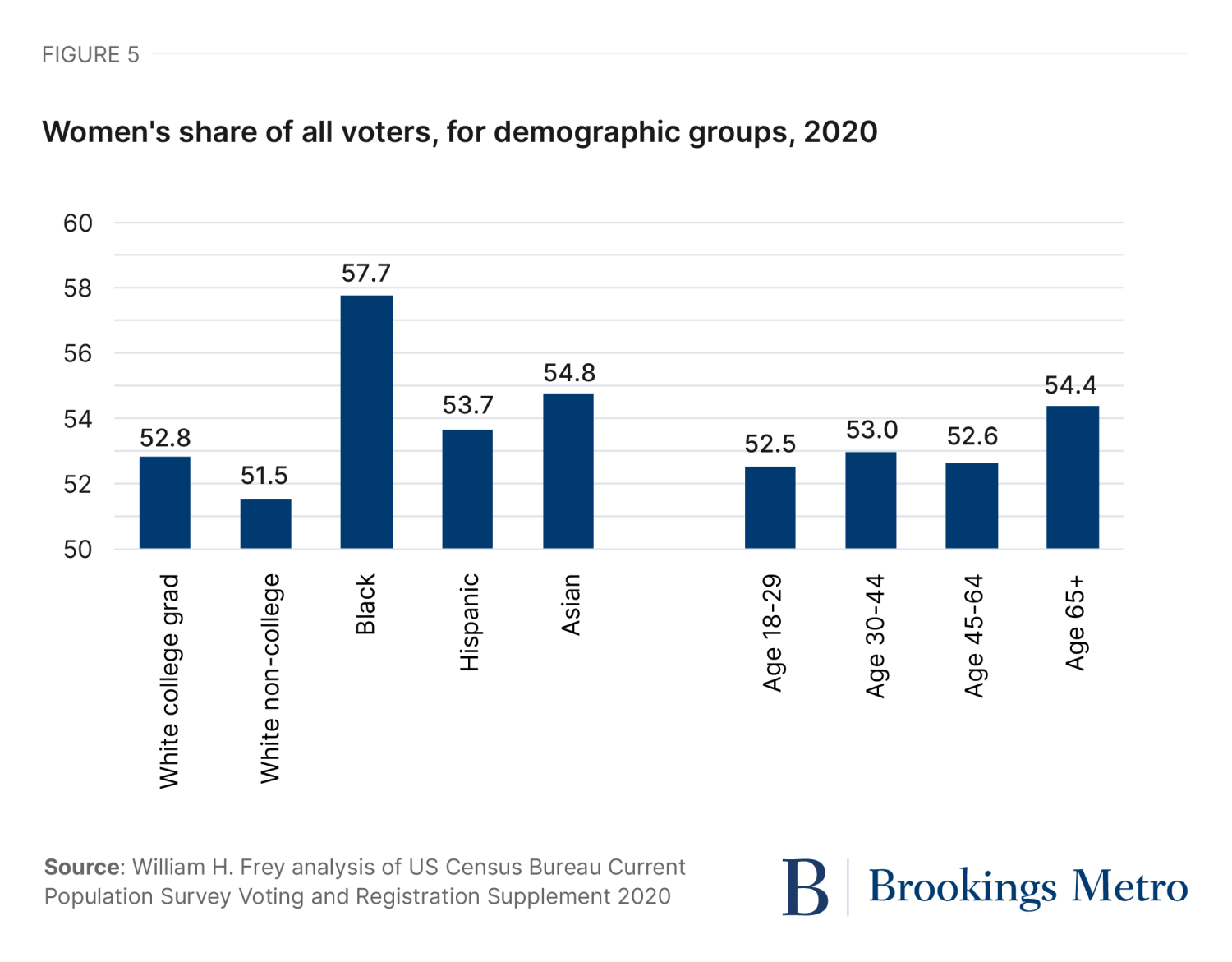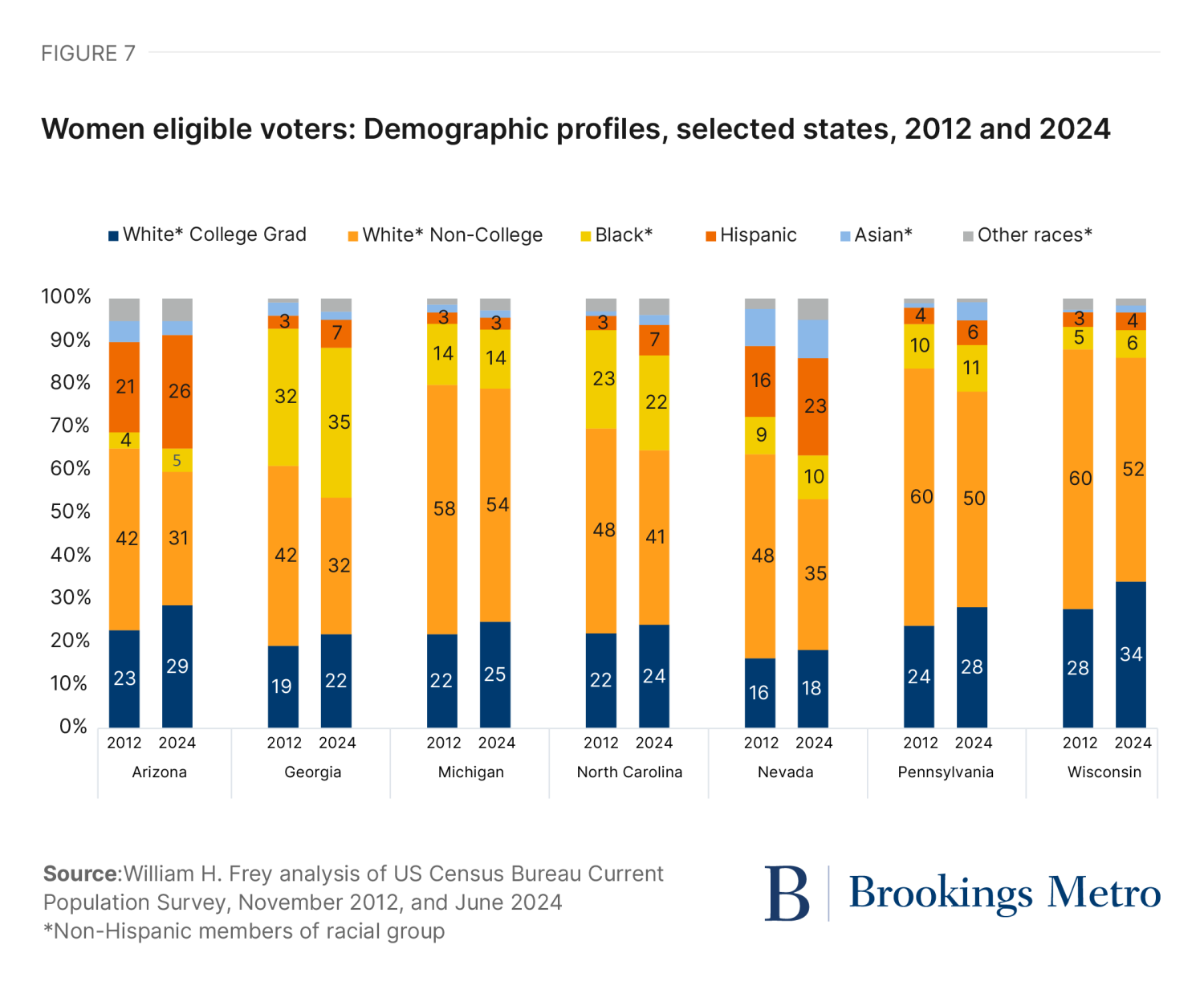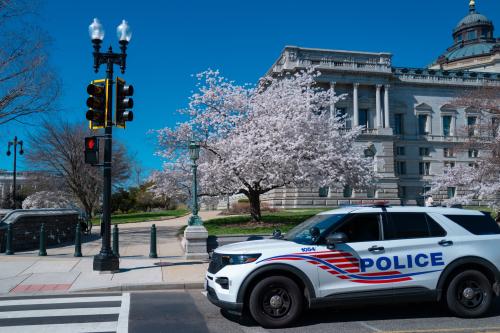The nomination of Vice President Kamala Harris as the Democratic presidential candidate has shaken up the race in ways that have yet to fully play out. However, given the fact that she could become the first woman U.S. president, it is surely worthwhile to consider the role of the women’s vote in November’s election.
One need only look back to the 2022 midterm election, where the women’s vote was arguably instrumental in rebuffing a predicted “red wave,” leading Democrats to exceed electoral expectations. That election occurred less than five months after the Supreme Court’s Dobbs decision that overturned Roe v. Wade, allowing states to greatly restrict access to abortion. This led to a greater-than-expected Democratic vote among women, especially young women, for House of Representatives and other state candidates.
Now, just weeks after most polls had President Joe Biden trailing his Republican rival Donald Trump, the emergence of Vice President Harris as the Democratic candidate has already injected enthusiasm among many Democrats, especially women. As my Brookings colleague Elaine Kamarck has argued, women’s health, abortion, and reproductive freedom—issues Harris has championed—will once again be leading issues for this election. Harris has also voiced support for issues important to women including paid parental leave, child care, and the economy, as well as other policies that have the support of many younger and minority women. Indeed, the broader support of women’s groups for Harris’ candidacy has already been evident in funding and outreach.
With Harris’ nomination, will new enthusiasm and a voting surge among women be enough to power her to victory in November? To address this question, this analysis first reviews the role of women’s votes in recent presidential elections and which women’s demographic groups were most favorable to Democratic candidates. It next shows how gender differences in voter turnout have provided women with a numerical electoral advantage over men. The analysis proceeds to look at changes in the demographic make-up of women voters, from 2012 through the present, showing the rise of Democratic-favorable groups within their ranks. It concludes with a voter simulation of 2024 election results showing what recent polls imply, if we assume that the new enthusiasm for Harris translates into higher voter turnout and increased Democratic support among women, both dynamics that could help increase her chances for victory in November.
Women have a history of backing Democratic candidates in presidential elections
Examining gender differences in presidential voting preferences shows that women have voted for Democrats over Republicans in every presidential election since 1984.1
This is evident for recent elections, as seen in Figure 1, which shows the D-R (Democratic minus Republican) vote margins by gender for presidential elections between 2000 and 2020. In each case, the D-R margins are positive for women and generally (though not always) negative for men, and women voted more strongly Democratic than men, regardless of whether a Democrat or Republican ultimately won the presidency.
Election year 2020 showed sharp gender disparities for the seven battleground states, displayed in Figure 2. In each of these states, only one of which (North Carolina) Trump carried, women registered positive D-R margins compared with negative margins for men. The widest gender disparities were in the three “blue wall” states of Wisconsin, Pennsylvania, and Michigan, as well the southern state of Georgia.
Gender differences also pervaded demographic groups in the 2020 presidential election (see figure 3), as was the case in earlier elections. D-R margins are higher for women than for men in groups where women voted strongly Democratic: Black voters, Hispanic voters, and voters aged 18 to 29. Even for non-college white women voters—who favored Republicans—the negative D-R margins are not as large as those of men. Only among Asian American voters were men’s D-R margins higher than women’s.
Women’s turnout rates are higher
Perhaps even more important than partisan preferences, turnout rates—the share of eligible voters who vote—will help dictate women’s influence in the coming election. Turnout rates for women have exceeded those for men in presidential elections dating back to 1980. Figure 4 depicts gender differences in turnout for presidential elections since 2000. The 2020 election showed the highest overall turnout rates in decades. Because of their higher turnout rates, and the fact that women live longer than men, the 2020 election had 9.7 million more female than male voters.
Largely because of their higher turnout rates, women comprised more than half of all voters (53%) in 2020. Yet their shares vary across demographic groups (see Figure 5). Women comprised 58% of all Black voters, 55% of Asian voters and 54% of Hispanic voters. Fifty-four percent (54%) of voters aged 65 and older were also women. And among white non-college graduate voters, a group that tends to vote Republican, women still comprised a majority (52%).
The female electorate is becoming more diverse and highly educated
As the size of the female electorate increases, its demographic makeup is changing. Figure 6 shows the shifts in the profile of eligible women voters between 2012 and 2024 by race and education. Notably, there are gains in women’s groups that tend to vote Democratic—white college graduates and people of color—and a decline in the women’s group that tends to vote Republican—white non-college graduates. For the first time in a presidential election, the latter group will make up less than 40% of the women’s electorate.
The seven battleground states, shown in Figure 7, also display similar shifts in the demographic profiles of their female electorates. In each, there is a decline in the share of white non-college graduate women, and an increase in the share of women of color. This is occurring in the “whiter” states of Wisconsin, Pennsylvania, and Michigan, as well as the more diverse states of Arizona, Nevada, Georgia, and North Carolina. In Nevada, for example, the share of women who identify as white non-college graduates declined from 48% in 2012 to 35% in 2024, while at the same time the share of women who identify as Black, Hispanic, Asian or other nonwhite races rose from 36% in 2012 to 47% in 2024. Thus, with respect to demographic attributes, the female electorates in each state have become more Democratic-leaning in their voter profiles.
Simulating the 2024 election after Harris announcement
Polls taken both before and after the shift from Biden to Harris as the likely Democratic nominee offer crude indications of what the 2024 election might hold. Three polls of likely voters conducted by the New York Times/Siena College on June 26, July 3, and July 25—after Biden bowed out of the race and endorsed Harris—reveal the changes that took place in men’s and women’s D-R voting margins (see Figure 8).
The D-R margins for women–at 14% for Harris vs. Trump on July 25, were especially high, though countered by a still-high negative D-R margin of 17% for men.
Still, the high women’s D-R margin favoring Harris greatly reduced the overall D-R margin compared with the earlier two Biden vs. Trump margins shown in Table 1. That is, in the two polls taken while Biden was still the assumed Democratic nominee, the negative D-R margins of -4% and -6% (44% Biden vs. 48% Trump on June 26; and 43% Biden vs. 49% Trump on July 3) strongly favored Trump. Yet, the July 25 poll for Harris vs. Trump reduced the D-R margin to just -0.6% (47.5 for Harris vs. 48.1 for Trump) when we applied this to a simulation model discussed below.
Of course, the July 25 poll was taken just after Biden withdrew and endorsed Harris as the likely Democratic nominee. Clearly, Harris’ campaign had not yet fully begun and the immediate support from many women’s groups suggests that both female turnout and voting preference could increase on Harris’ behalf in the weeks and months ahead. To estimate these likely effects, we conducted simulations of national D-R margins—a base simulation—and two additional simulations based on assumptions of greater women’s turnout and a stronger voter preference for Harris (see Table 1).
All three simulations begin with the 2024 national female and male eligible voter populations reported in the Census Bureau’s monthly Current Population Survey. The “base” simulation applies the 2020 election female and male voter turnout rates, presented above, and the Harris vs. Trump voter margins from the July 25 poll shown in Figure 8. The second simulation alters the base simulation by increasing women’s turnout rate by 10%, from 68.4% to 75.2%, larger than the 5.1% rise in female turnout which occurred between 2016 and 2020. The third simulation alters the second simulation by also increasing the female D-R voting margin by 5 percentage points.
The results in Table 1 show that while the base simulation yields a small Trump advantage, a 10% rise in women’s turnout would bring a small Harris advantage. Moreover, both increasing women’s turnout by 10% and the women’s D-R vote advantage by 5 percentage points would yield a clear Harris win (49.2% Harris vs. 46.3% Trump). These assumptions, reflecting a rise in women’s enthusiasm for Harris between now and Election Day, could put a popular vote win for her well within reach. It is also possible that the strong Trump voter preference for men, reported in the New York Times/Siena College poll, could shift as more male voters become familiar with her campaign.
The impact of an energized women’s voting base
The simulations conducted here make plain that rising women’s enthusiasm for Kamala Harris’ candidacy could lead to consequential shifts in the 2024 election through increases in voter turnout and voter preference. This is especially notable given the recent history of women’s support of Democratic candidates in national and congressional elections. Beyond looking at polls alone, simulations such as these show how taking into account the eligible voter base and rising voter turnout rates can affect election results.
These simulations should not be viewed as predictions; much will depend on how well Harris can continue to energize an already favorable female voter base. It also depends on her performance in crucial battleground states, which will determine how she fares in the Electoral College. What these simulations do show is how an enthusiastic voting bloc, when translated into voter turnout and voting preferences, could impact the final election result this coming November.
-
Footnotes
- Susan J. Carroll, “Voting Choices: The Importance of Women Voters and the Gender Gap” in Susan J. Carroll, Richard L. Fox and Kelly Dittmar, Gender and Elections: Shaping the Future of American Politics, Fifth Edition, Cambridge University Press, 2022
The Brookings Institution is committed to quality, independence, and impact.
We are supported by a diverse array of funders. In line with our values and policies, each Brookings publication represents the sole views of its author(s).






Commentary
Kamala Harris’ chances in November could hinge on a women’s voting surge
August 5, 2024